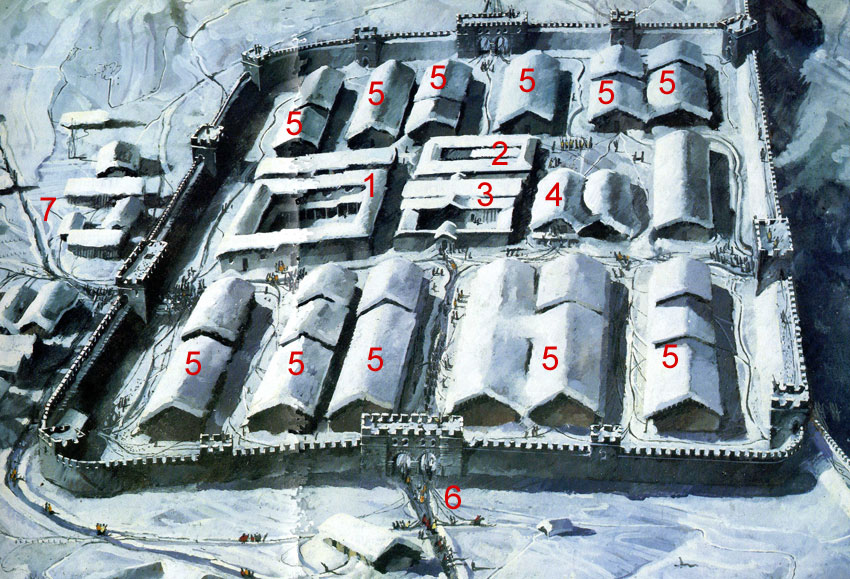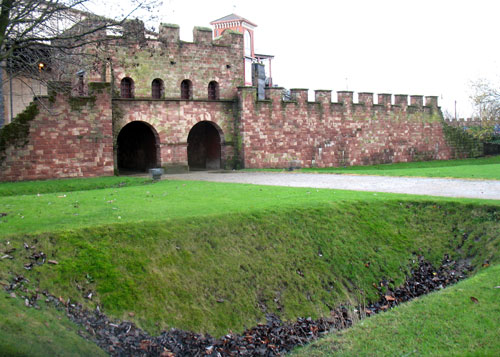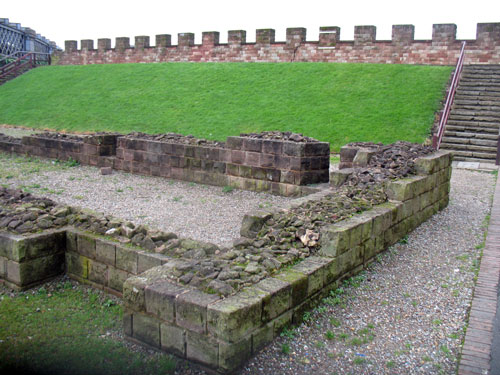 |
|
|
The Life of a Roman Soldier There were two main types of Roman soldier. If you were a Roman citizen you could join the legions and become a legionary. If you weren't a citizen but you lived in the Roman empire, you could become an auxiliary soldier. Auxiliaries were only paid a third as much as auxiliaries, but lots of people still wanted to join up. It was a steady job with a reliable income, which might be better than what you could make at home, say as a farmer. Joining Up Early on, in the Roman Republic (before the time of the emperors), soldiers were ordinary people with other jobs who fought in times of war. Men could serve from the ages of 17 to 46, with a limit of 16 years' service in all. They had to provide their own armour and were only paid expenses. Later on, a professional army was created. It had become very difficult to recruit men as wars took place very far from home and soldiers had to be away from their family and businesses for a long time. A Roman commander called Marius changed things completely. He allowed ordinary people, including the poor, to join the army. They were paid a wage and joined for 25 years. They could make more money from plunder (wealth captured from the enemy), and now and then an emperor gave them special gifts of cash. After discharge from the army, veterans were usually given some land. This was often in the town next to the camp they had lived in. With their pay, soldiers had to buy their own food, clothing, bedding, boots, weapons and armour. They still managed to save some money for retirement, and sometimes decorated their armour and weapons with gold and silver. Life in the Army A new soldier had to take a military oath of allegiance, which he renewed each year on New Year's Day. He needed a lot of training and experience to bring him up to the level of a veteran legionary. He had to march about 30km three times a month, he learned how to build a camp, and was drilled twice a day (when fully trained this dropped to once a day).
The new recruit was trained in stone slinging, swimming and riding horses. For weapons training he practised on a wooden stake the height of a man with a wooden sword and a wicker shield. He was taught to thrust with his sword, not slash - in a tight battle there was no room to swing a sword and he might hurt his comrades.
Eventually the recruit took part in mock battles. His sword and pilum both had their points covered to prevent serious injuries. |
Training in the amphitheatre at Caerleon |
 |
|
|
The Army Camp
Legionaries lived in barracks in the camp, which was a wooden building in the main legionary base or a tent if the army was on the move. They were not allowed to marry but often had unofficial wives in the towns which grew up outside the camp.
The men slept in bunk beds, with 8 soldiers to a room. There was no canteen and they had to cook their own meals, eating with the same men who shared their bedroom. The photo right shows a reconstruction of a barracks room.
Eighty men made up a century, commanded by a centurion, who had a room to himself. The centurion enforced very strict discipline. There were 6 centuries in each cohort (which makes 480 men per cohort). The first cohort was made up of 5 centuries of 160 men (800 men). The legion itself was made up of 10 cohorts plus the first cohort, which is a total of 5600 men.
In Britain there were three legions and their bases were at York, Chester, and Caerleon (in South Wales). There were also many other camps with smaller forces, often auxiliaries. Along the border with Scotland stretched a 73-mile wall, built under Emperor Hadrian and known as Hadrian's Wall. This had lots of forts and towns along its length, with a small castle every mile.
Often, soldiers had to build a camp after a day's marching. They were trained in many skills, so they could build stone or wooden walls, gates, roads, aqueducts and ditches. In camp soldiers were trained to fulfill the roles of a carpenter, blacksmith, stonemason, architect, clerk (record keeper), priest, and doctor.
The camps were like small towns, with a variety of buildings. The picture right shows Caerleon, and the one below shows a small camp at Housesteads next to Hadrian's Wall. As well as the barracks there were bigger houses for commanders, a hospital, and granaries for storing grain. To protect the camp there were walls, ramparts, and ditches.
For fun, exercise and relaxation the camp might have baths. At Caerleon these were quite big (see the photos lower down). In his spare time the soldier could also visit the nearby town for shopping, eating, drinking or gambling in a tavern, or visiting his wife, family, or girlfriend.
|
  The legionary fortress at Caerleon. Outside the walls you can see the amphitheatre. This was used fror training and military parades, as well as gladiator fights and animal hunts. |
|
|
|
|
|
|










